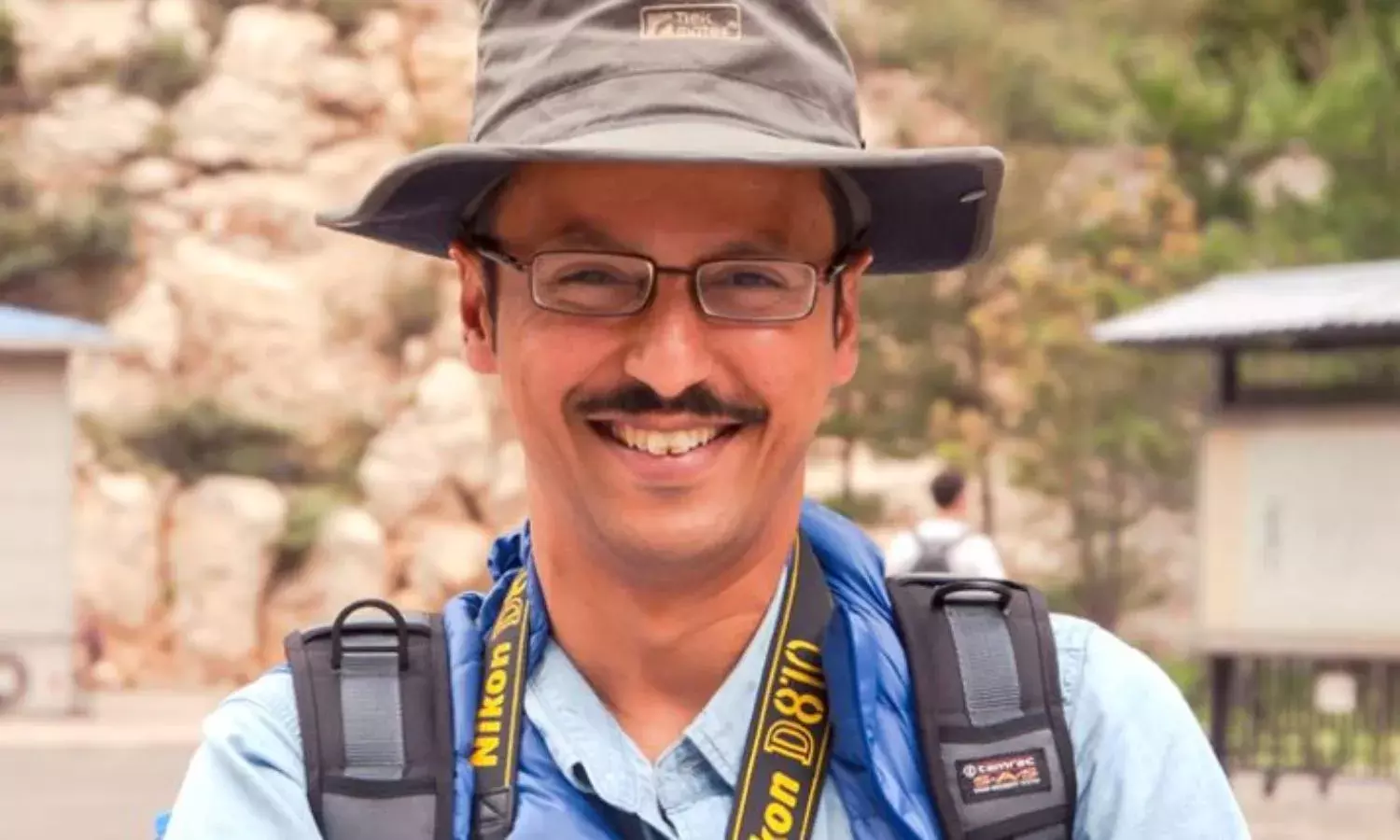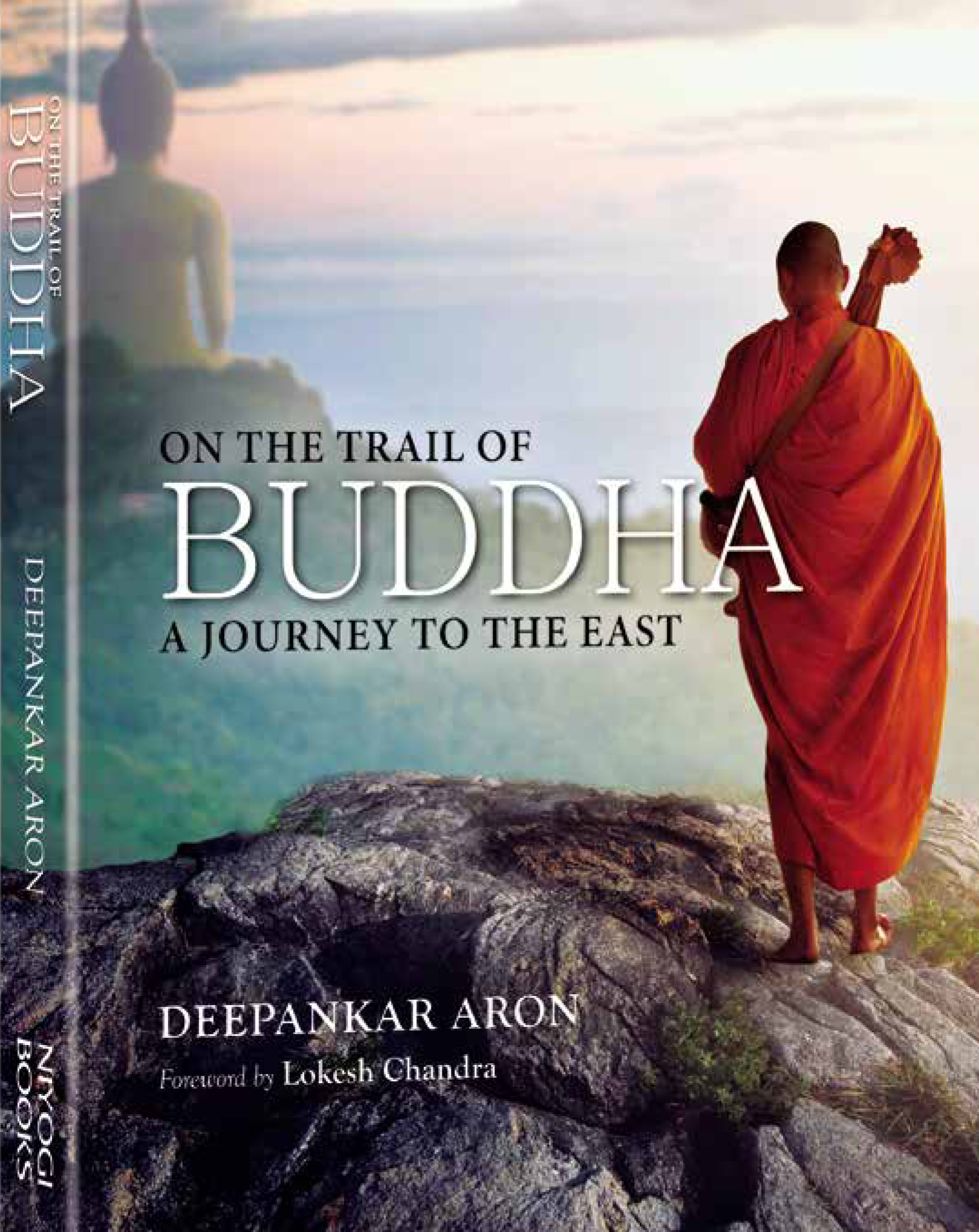A Journey Beyond a Destination
A must read account of the discovery of a tremendous unity in diversity

A senior officer in the Indian Revenue Service, Deepankar Aron was posted in Hong Kong as a Consul in 2012. It was just a happenstance that he noticed a 35-metre high Tian Tan Buddha statue standing right next to the Hong Kong Airport that put him "On the Trail of Buddha: A Journey to the East".
Aron writes about two octogenarian Japanese pilgrims who had stood with folded hands before an old and dilapidated structure that seemed like the sanctum sanctorum of a temple. "It was somewhat surprising that they should have travelled thousands of miles as pilgrims to a non-descript corner of China called Karakhoja. Even more surprising was the fact that one was a Buddhist priest and the other a worshipper of Lord Krishna – the Hindu Lord whose sacred message forms the essence of Bhagavad Gita," he adds.
"It is the story of these two unlikely Japanese pilgrims that epitomises the theme of this book – exploring the richness, depth and breadth of the spiritual, philosophical and cultural linkages that bind India to the East Asian civilizations of China, Japan, Korea and Mongolia," writes Aron.
The book traverses various regions of East Asia, from Kashgar in Xinjiang in the West to Koyasan in Japan in the East; from Ulaanbaatar in Mongolia in the North and to Kaohsiung in Taiwan in the South. It is as much about the discovery of a tremendous unity in diversity, as it is about hopping between different time zones separated by 2000 years of history.
On the Trail of Buddha is divided into six chapters for ease of navigation. The first covers the ancient cities along the Silk Road in China that were significantly responsible for the spread of Buddhism from India, not only into China but also in much of East Asia. The second covers the North-South trade axis that connects China with Mongolia. The third moves from Sichuan in South-Western China to the primordial Kailash Parvat or Kang Rinpoche and the lake, Mansarovar or Mapham Yumtso in Tibet. The fourth moves to the South-Eastern coastal China and Taiwan from Hong Kong to Shanghai touching Hangzhou, Suzhou and Nanjing. It then moves from Taipei to Kaohsiung passing through the city of Tainan, dotted with temples.

It is possibly one of the most prosperous regions of China with many modern cities. It is thus not a surprise that most of the grandest and tallest statues of Buddha have come up there in the recent past. The fifth chapter meanders inside the calmness of Korea, and last but not the least, comes the land of the Rising Sun.
A place where history, tradition, religion and culture are seen most beautifully preserved. The author also highlights five to 10 representative cities in each of these regions.
Writing a book of such magnitude was not an easy task. Aron faced numerous challenges such as language, distances, permissions, paucity of time, and resources of course, but luckily all those were sorted out.
Interestingly, these journeys were undertaken in all modes of transportation – both animal and mechanised – riding camels, mules and horses; walking and trekking, especially in Tibet. The most exciting of the travelling modes for Deepankar was the high speed trains in Japan, China and Taiwan.
On the Trail of Buddha: A Journey to the East takes the reader on a slow-moving train journey rather than a Bullet train. The author has chronicled the spread of Buddhism, as preserved in the traditions of these countries, binding them with India. Though somewhat smaller than the standard coffee table book, On the Trail of Buddha with its 308 pages illustrated with bountiful photographs indicative of Deepankar's expertise with the camera and printed on art paper provides an easy read.
Title: On the Trail of BUDDHA: A Journey to the East
Author: Deepankar Aron
Pages: 308
Publisher: NIYOGI BOOKS
Cover Price: Rs. 1995
Raj Kanwar is a 92-year-old Dehradun-based veteran journalist and author.



